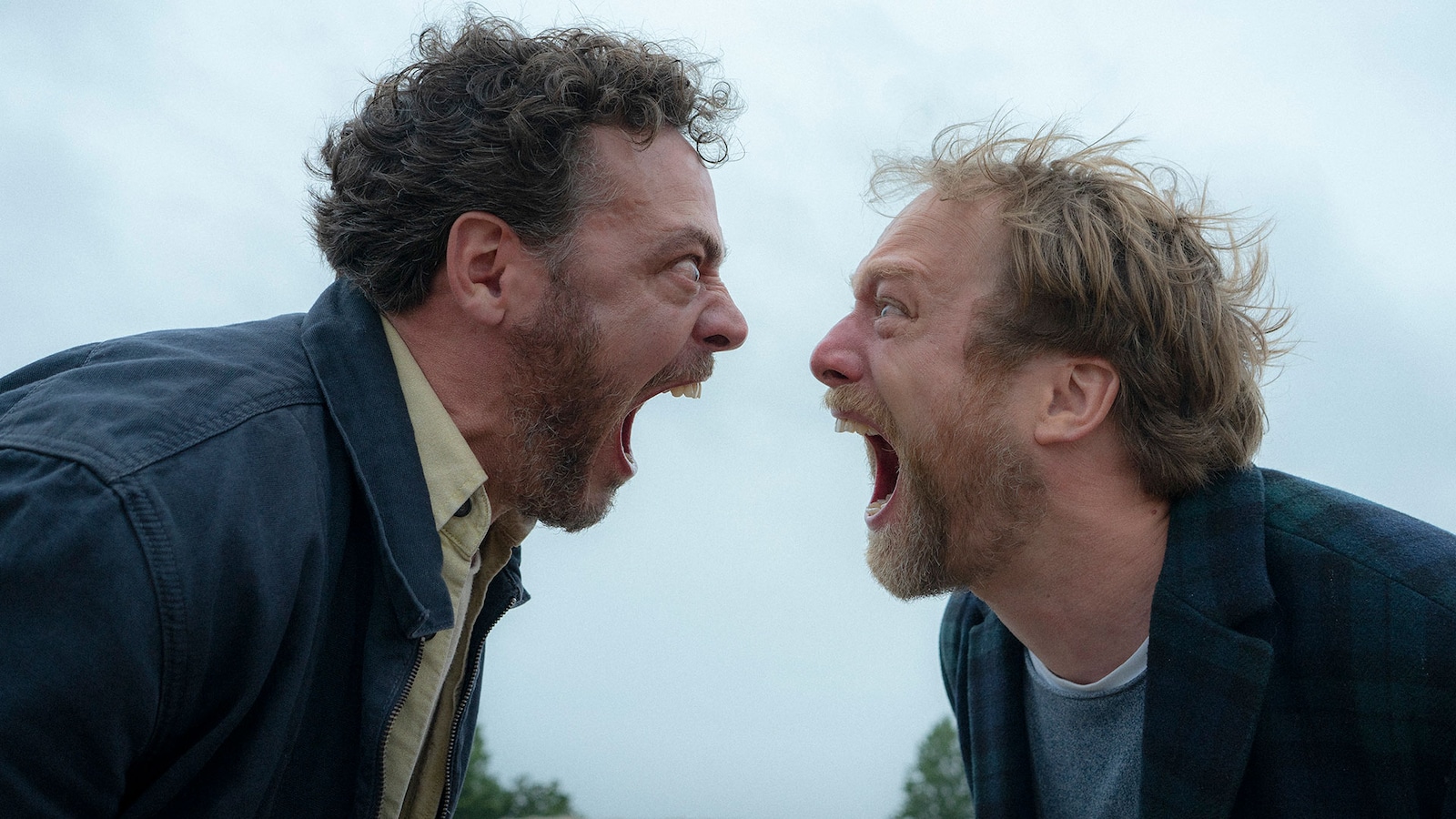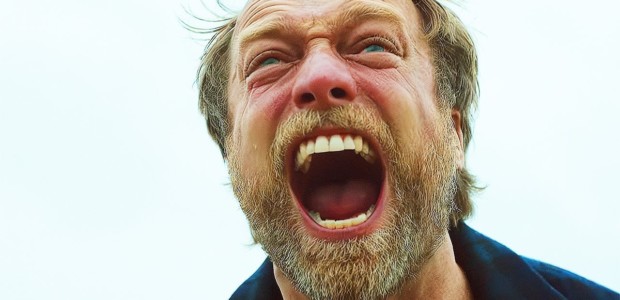![]()
There seems to be a discussion that pops up every few weeks online about unlikable and irredeemable protagonists. Whether filmmakers like Schrader, Scorsese, and Bigelow are condoning (or even praising) the acts of their violent and hate-filled leads, even if it’s unintentional. But one type of unlikable main that is rarely discussed is the character made to be a victim. I’m sure there’s a better term for it, but you all know these types of figures, especially from horror films. The person that hears a strange noise in the dark outside and investigates with a wonky flashlight. The family that moves into an ancient house that’s far more affordable than it should be, all without much investigating into its violently tragic past. The lovers that are hellbent on hooking up at Fornicators’ Slaughter Lake amid another murder spree.
Most of these archetypal figures are meant to be supporting dead meat to the main story—necessary sacrifices to establish the threat, raise the body count, and generally keep the audience awake until the climax. Their deaths are usually ornate and tend to be the result of some sin or act of hubris or simple idiocy. The audience delights in watching them get dispatched for making mistake after mistake. If they didn’t skedaddle at the first time they saw something freaky, or when they heard a disembodied voice threaten them, or when the number of missing friends entered double digits, then perhaps they don’t deserve to live (at least within the context of the film).
But there’s another class of professional victim protagonists that is devoid of any such vicarious thrill or puerile glee. This character tends to be found in a lot of European works, particularly Scandinavian and Germanic films; and even more particularly, Dogme 95 and Lars Von Trier used to love this besieged clod. This is the victim whose torture is meant to be pathetic, yet whose lives are meant to mirror our own. “Don’t you see,” the filmmaker seems to say with these impotent people destined for some truly unhappy ending, “they are stand-ins for the type of society you have built and the so-called virtues you claim to admire.” And sometimes this approach works amazingly well—for example, Michael Haneke excels at this type of character study in works like THE WHITE RIBBON and FUNNY GAMES. But, usually, it’s just a frustrating slog that skates by on good style while making an obvious and boring point with the attempted wit of a freshman philosophy major. In other words, usually it’s SPEAK NO EVIL.

Danish couple Bjørn (Morten Burian) and Louise (Sidsel Siem Koch) are on holiday in Tuscany with their daughter Agnes (Liva Forsberg). While bored by most of the others staying at their inn, the trio do get along with the Dutch family of Patrick (Fedja van Huêt), Karin (Karina Smulders), and their son Abel (Marius Damslev). They hit it off so well that Bjørn and family agree to visit their Dutch friends when invited months later. But all is not well at their friends’ residence. Microaggressions and odd flare ups of anger and intensity keep happening. Abel tries desperately to communicate with the Danes, despite an unfortunate speech impediment, and the small family feels increasingly, extremely uncomfortable. They wonder if this is just a matter of something lost in translation or merely personality traits they never noticed while in Tuscany or something much darker.
It’s something much darker. Otherwise, there’s no movie here. You know this. And Christian Tafdrup who directed and co-wrote the film (with co-writer Mads Tafdrup) knows that you know this as well. Quick inserts of lingering looks and various characters being creepy in the background are greeted with tension-mounting strings to indicate that this is something wrong and something to remember later. And when that climax arrives, it’s impressively shocking not because it’s unexpected but because of its genuinely upsetting brutality. SPEAK NO EVIL has many flaws, but an apocryphal bloody ending is a true commitment to its misanthropic vision of horror.

Bjørn and Louise are clearly overpolite, staid bourgeoisie types who are too timid and complaisant and thus put on blinders to the ever-escalating madness that is swirling about them. Viewers know from the jump that something is off with Patrick and his brood, and so every slip of the mask and peek at the real face is an obvious sign to audiences while Bjørn dismisses it with some rationalization. And this certainly happens in real life—think of people of certain political persuasions who tie themselves in so many logic pretzels and conspiracy theories to explain away something that would otherwise make them question their beliefs.
And that societal bent is not an accident here, as the whole of SPEAK NO EVIL feels like it’s meant to comment on some historical or political event that is never really defined. My guess is that it’s meant as an indictment on the tendency for polite society to appease the return of the brutality and violence of fascism in so-called “civilized” countries rather than confront it head on. And by the time these places (including the United States) decide to fight back, it’s already too late and the fates have been sealed. But that’s purely conjecture.
The problem is SPEAK NO EVIL’s theme feels like well-worn territory by now. And maybe that’s the point? Maybe the fact that these types of stories must be played out every 40 years or so to try and tamp down on some new neo-fascistic movement is indicative of how pathetic everything is and how close to violent chaos we all stand. But just because something is logically sound or even clever doesn’t make it necessarily good. These scenarios have played out in varying degrees in WHO’S AFRAID OF VIRGINIA WOOLFE, RHINOCEROS, CARNAGE, and the aforementioned FUNNY GAMES—albeit with slightly different purposes, but still done with better style and more engaging sequences. Even with its shockingly raw ending, nothing in SPEAK NO EVIL feels especially fresh or new.

Make no mistake, Tafdrup’s film is well made. The performances all feel very lived in, particularly Burian, and the relationships between the characters have a real-life quality that helps make more sense of the obviously spiraling situation. There’s a nice use of lighting and camerawork from DP Erik Molberg Hansen that starts off very rustic and vernal before increasing coldness and darkness encroaches on the frames and more and more natural light sources are used for the action. Similarly, the films color palette moves from the lush greens of Tuscany to the austere doldrums of Denmark and then the sickly yellows and abyssal shadows of Patrick’s house.
SPEAK NO EVIL isn’t necessarily a bad movie. It will disturb many an audience member and hopefully will initiate important conversations about action versus compliance. The performances are solid, and the visuals are effective, especially when things turn nasty. But simply getting angry at people for being too passive and making too many mistakes without any sort of real payoff would feel mean-spirited if it hadn’t all been done before and done better. Mafdrup doesn’t bring anything especially new here from the imagery to themes or anything that hasn’t been in a better film told in a more innovative manner. While it does many things well, SPEAK NO EVIL never does anything particularly well enough to justify spending so much time frustrated with people destined to be victims.

SPEAK NO EVIL is in limited release now and premiered on Shudder on September 15th.
Tags: Christian Tafdrup, Denmark, Erik Molberg Hansen, Fedja van Huet, Karina Smulders, Liva Forsberg, Mads Tafdrup, Marius Damselv, Morten Burian, Netherlands, Nicolaj Monberg, OAK Motion Pictures, Profile Pictures, Shudder, Sidsel Siem Koch, Sune ‘Køter’ Kølster, TrustNordisk



No Comments